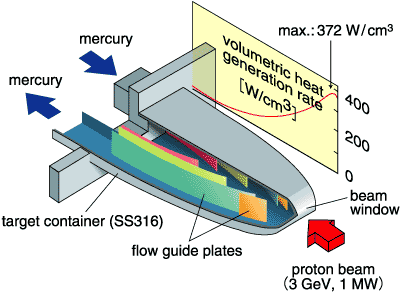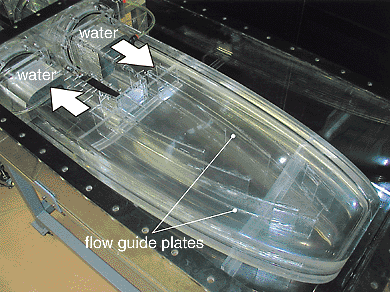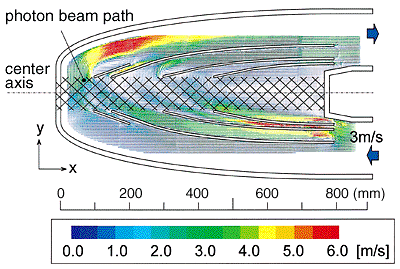The mercury target is a neutron source in which high intensity neutron beams are produced by spallation reactions between mercury and the proton beam that is generated in the MW-class proton accelerator. Because the spallation reactions are accompanied by a large amount of heat generation, suppressing the creation of the mercury stagnant region in the proton beam path is very important for the swift cooling of mercury. Because the heat load caused by the spallation reaction is largest near the beam window, where the proton beam first impinges, and it decreases almost exponen-tially along the proton beam path, a mercury flow rate distribution in which plenty of mercury is supplied to the high heat load area has to be realized.
In order to meet this technical challenge, JAERI proposed a cross-flow type target container, shown in Fig. 3-4, in which the mercury flows across the proton beam path, and has continued the optimization of the flow channel structure with a thermal-hydraulic analysis. Then, to verify the analytical results, we fabricated a mock-up model of a cross-flow type target with plexiglass, shown in Fig. 3-5, and carried out a water flow visualization experiment to measure the flow velocity fields in the target model. As a result, we demonstrated that the cross-flow velocity distribution that conforms to the heat load distribution along the proton beam path can be achieved by arranging flow guide plates properly in the mercury flow channel (Fig. 3-6). |


